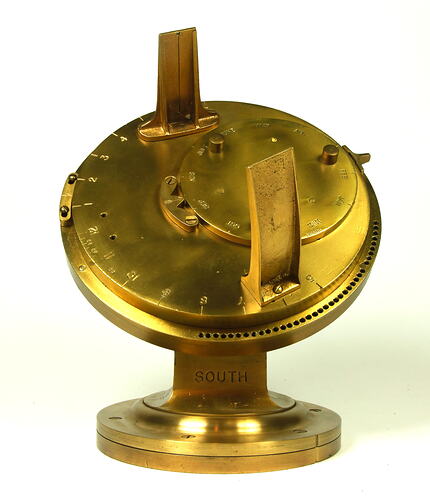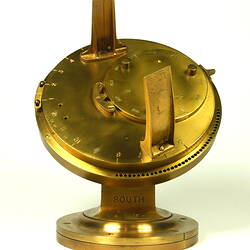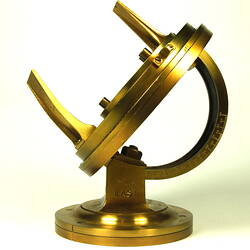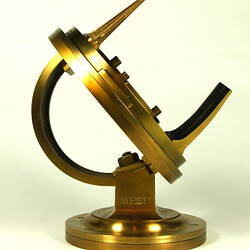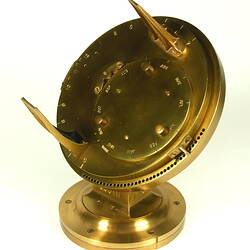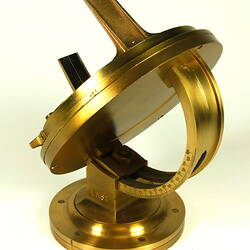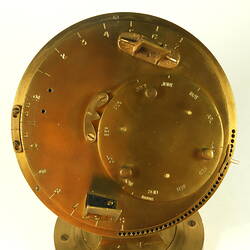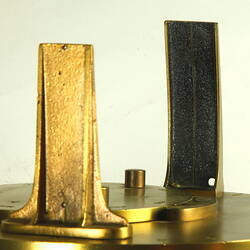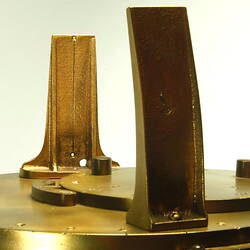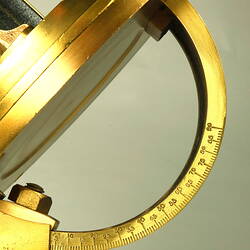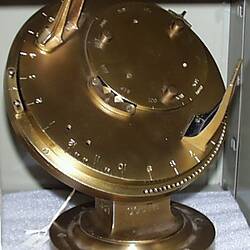Summary
Helio-chronometer or universal sun dial, made by Pilkington-Gibbs in Preston, Lancashire and distributed by O. Nelson, London, England, circa 1910, Invented by George James Gibbs and patented in 1907.
The Heliochronometer was designed to enable accurate calculation of the time to a fraction of a minute. Each heliochronometer was adjusted at the factory to the purchaser's latitude and longittude.
The instrument was promoted as being sold to 'His Majesty the King, Royal Naval College, the Meteorological Office, and the Best Families in the United Kingdom, India, Colonies, etc.' Production ceased with the advent of World War I in 1914.
Physical Description
Brass instrument rotates on circular base, marked north east south west. Two arms on disc with hours marked and rotated by small grip arm with two holes is adjusted by disc marked with months. Angle of discs is adjusted to suit latitude by quadrant that passes through base. Upper disc is rotated until sunlight through holes in upper arm falls on line on lower arm. Time is shown by arrow at side.
More Information
-
Collecting Areas
-
Acquisition Information
Donation from Swan Hill Pioneer Settlement, Mar 1967
-
Inventor
Mr George J. Gibbs, Bamber Bridge, Lancaster, England, Great Britain, circa 1906
-
Manufacturer
Pilkington-Gibbs, Preston, Lancashire, England, Great Britain, circa 1910
-
Distributor
O. Nelson, 32 Cheapside, London, England, Great Britain, circa 1910
-
Classification
-
Category
-
Discipline
-
Type of item
-
Overall Dimensions
30 cm (Height), 22 cm (Outside Diameter)
-
Keywords
